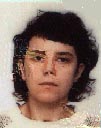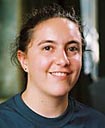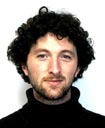James CATMORE
University of Lancaster
James.Catmore@cern.ch

I am working on the ATLAS detector in the B-physics group, specifically, on the measurement of the '4th' unitarity triangle angle delta-gamma. This is small in the SM and a larger value would indicate CP violation mechanisms not explained by the current theory. The channel of interest is Bs->JPsi(mu+mu-)Phi(K+K-). Analysis of the angular distribution of the decay products will indicate the relative magnitudes of the polarisation decay amplitudes, which will in turn lead to delta-gamma. I will assess the performance of ATLAS in measuring delta-gamma. For the past year I have been working on event generation, using PYTHIA and EvtGen to produce the correct angular distributions. Alongside this I am now developing analysis techniques to enable the reconstruction of the angular distributions (taking into account background processes, production asymmetry etc) and thereby assess the accuracy of the measurement of this quantity with ATLAS.
Katarzyna CIESLAK
Warsaw Univeristy
kcieslak@fuw.edu.pl

Shoshanna COLE
Falkiner High Energy Physics, Univ. Sydney
shcole@physics.usyd.edu.au

For my Ph.D. thesis I am working on the Belle experiment. Belle is the only detector in the KEK-B 'B Factory', an assymetric e+e- collider located in Tsukuba, Japan, which operates at the Upsilon(4S) resonance. I am measuring the branching fraction of a rare semi-leptonic B meson decay, B+ -> pi0 l+ nu, in which a charged B meson decays into a neutral pion, a charged lepton and a neutrino. I am about to expand my analysis into a measurement of the related decays B+ -> eta l+ nu B+ -> eta' l+ nu. Ultimately, I hope to provide an estimate of the CKM (quark-mixing) matrix element Vub.


